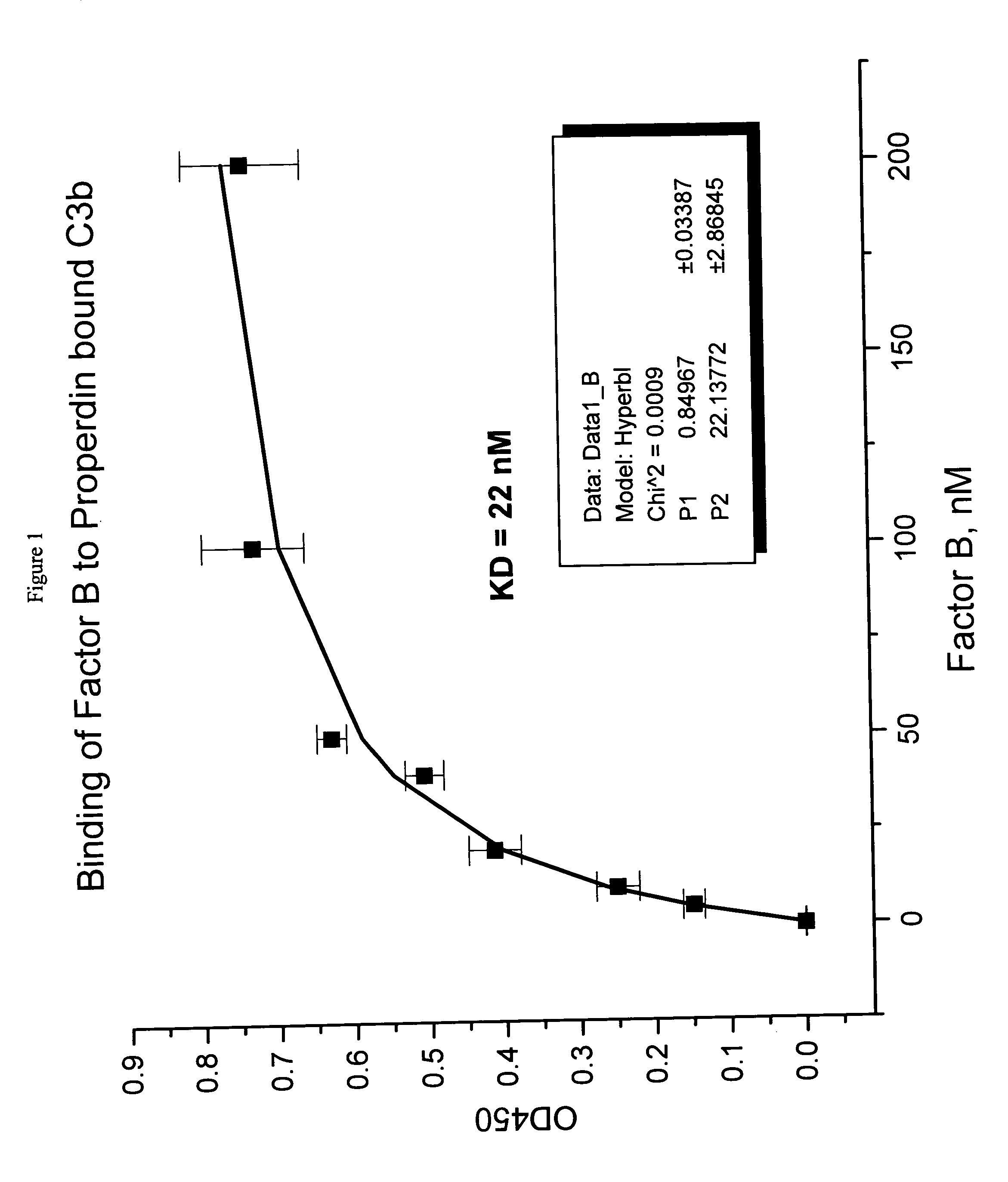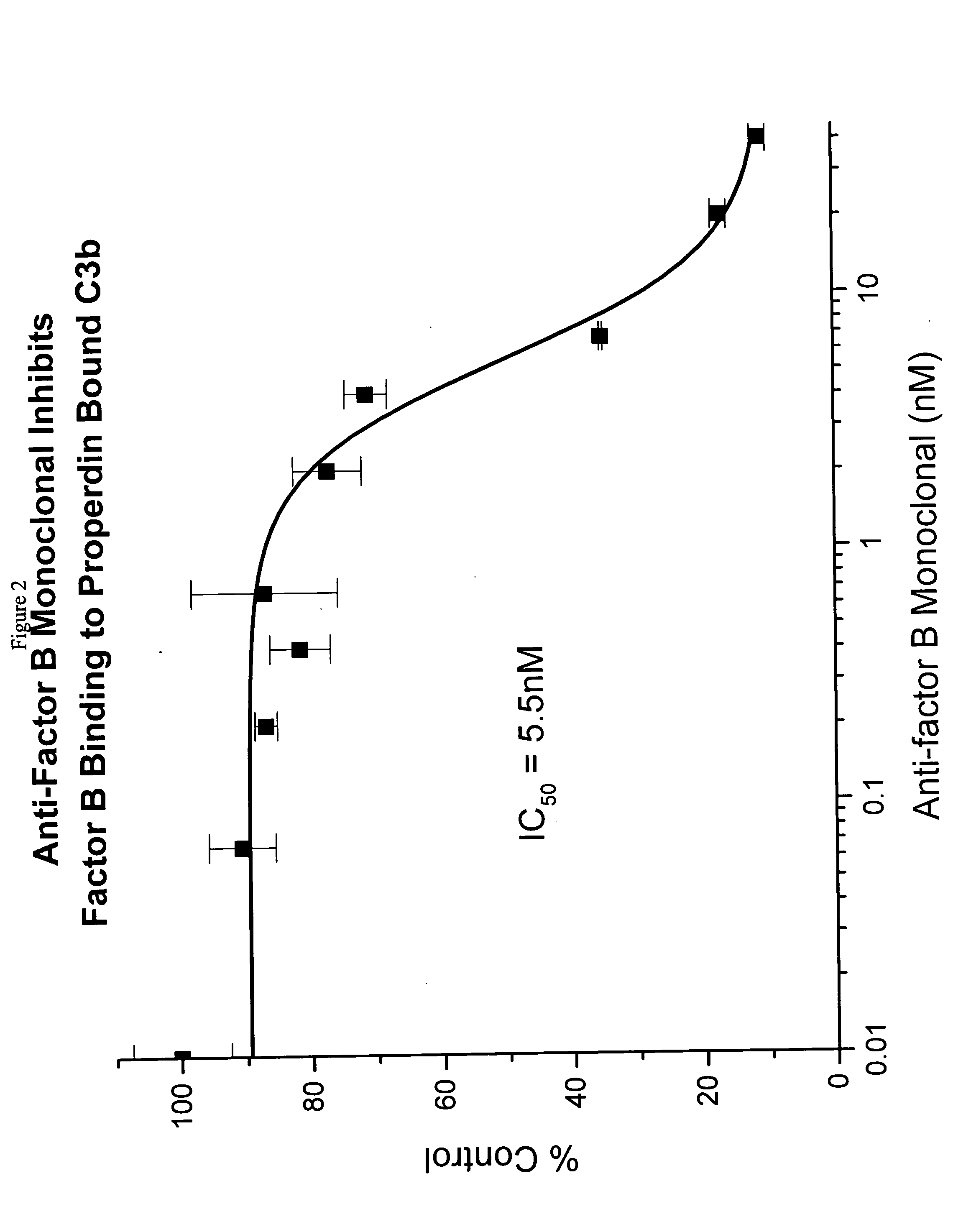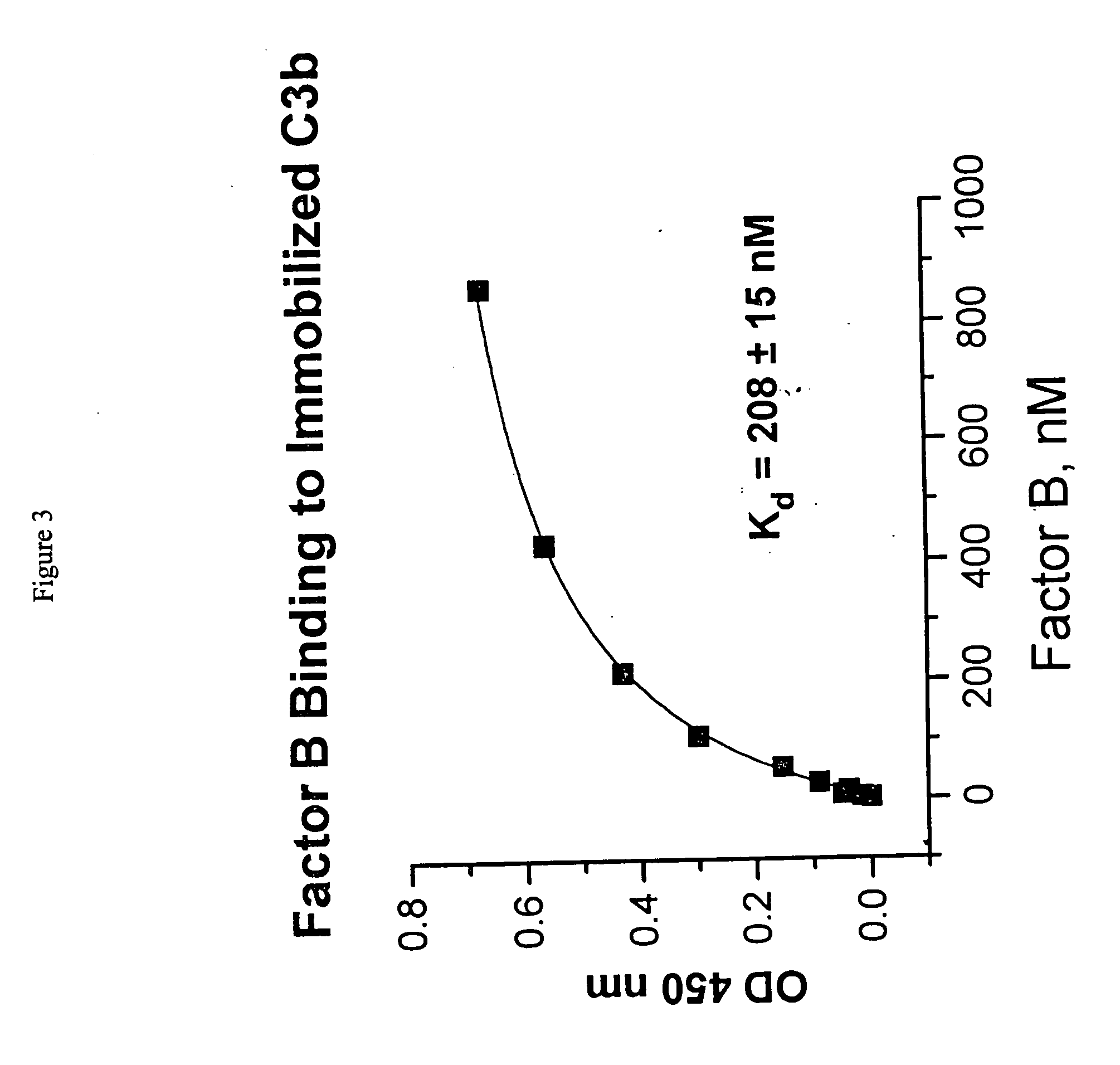Method of inhibiting factor B-mediated complement activation, and the uses thereof
a technology of complement activation and inhibition, which is applied in the field of complement activation, can solve the problems of host cell lysis, organ damage, and potential threat to the host, and achieve the effect of inhibiting complement activation and preventing the cleavage of factor b
- Summary
- Abstract
- Description
- Claims
- Application Information
AI Technical Summary
Problems solved by technology
Method used
Image
Examples
example 1
Binding of Factor B to Properdin-Bound C3b
[0044] Polystyrene microtiter plates were coated with human C3b (0.5 μg / 50 μL per well) (Calbiochem, San Diego, Calif.) in phosphate buffered saline (PBS), (5 mM diethyl barbiturate, 120 mM NaCl, 5 mM MgCl2, 5 mM EGTA) overnight at 4° C. After aspirating the C3b solution, wells were blocked with PBS containing 1% bovine serum albumin (BSA) (Sigma Chemical Company, St. Louis, Mo., Cat. No. A7888) for 2 hours at room temperature. Wells without C3b coating served as background controls. Aliquots of human properdin 4 nM in blocking solution were added and plates were allowed to sit for 2 hours to the C3b coated wells to allow properdin binding to C3b. This method would allow the properdin-C3b complex formation. The plate was rinsed with PBS and aliquots of human factor B (or factor B) (Advanced Research Technology, San Diego, Calif.) at varying concentrations in blocking solution were added to the wells. Following 2-hour incubation at room temp...
example 2
Binding of Factor B to C3b
[0050] Polystyrene microtiter plates were coated with human C3b (0.5 μg / 50 μL per well) (Calbiochem, San Diego, Calif.) in veronal buffered saline (VBS): (5 mM diethyl barbiturate, 120 mM NaCl, 5 mM MgCl2, 5 mM EGTA) overnight at 4° C. After aspirating the C3b solution, wells were blocked with VBS containing 0.5% human serum albumin (HSA) (Sigma Chemical Company, St. Louis, Mo., Cat. No. A9511) for 2 hours at room temperature. Wells without C3b coating served as background controls. Aliquots of human factor B (Advanced Research Technology, San Diego, Calif.) at varying concentrations in blocking solution were added to the wells. Following 2-hour incubation at room temperature, the wells were extensively rinsed with VBS. C3b-bound B was detected by the addition of mouse monoclonal anti-human factor B antibody (detection antibody) at 1:1000 dilution in blocking solution, which was allowed to incubate for 1 hour at room temperature. After washing the plates w...
example 3
Alternative Pathway-Dependent MAC Assay
[0052] The binding and inhibition data above reveal that the factor B monoclonal antibody prevents the binding of factor B to properdin-bound C3b. Since factor B is the critical component of the C3 convertase, it was of interest to us to determine whether the factor B antibody might appreciably affect the terminal aspects of the alternative complement cascade. The final end product of this pathway is the C5b-9 membrane-attack complex (MAC). To analyze the effects of the factor B antibody on MAC formation via the alternative pathway, an assay was utilized in which bacterial LPS was used as a substrate to initiate the alternative complement pathway cascade.
[0053] Previous studies have demonstrated that lipopolysaccharide (LPS) from Salmonella Typhosa (S. Typhosa) (Sigma Chemical Company, Cat. No. 6386) serves as a potent substrate for complement alternative pathway activation [19]. Microtiter wells were coated with LPS (2 μg / 50 μL per well) in ...
PUM
| Property | Measurement | Unit |
|---|---|---|
| molecular weight | aaaaa | aaaaa |
| molecular weight | aaaaa | aaaaa |
| vascular permeability | aaaaa | aaaaa |
Abstract
Description
Claims
Application Information
 Login to View More
Login to View More - R&D
- Intellectual Property
- Life Sciences
- Materials
- Tech Scout
- Unparalleled Data Quality
- Higher Quality Content
- 60% Fewer Hallucinations
Browse by: Latest US Patents, China's latest patents, Technical Efficacy Thesaurus, Application Domain, Technology Topic, Popular Technical Reports.
© 2025 PatSnap. All rights reserved.Legal|Privacy policy|Modern Slavery Act Transparency Statement|Sitemap|About US| Contact US: help@patsnap.com



